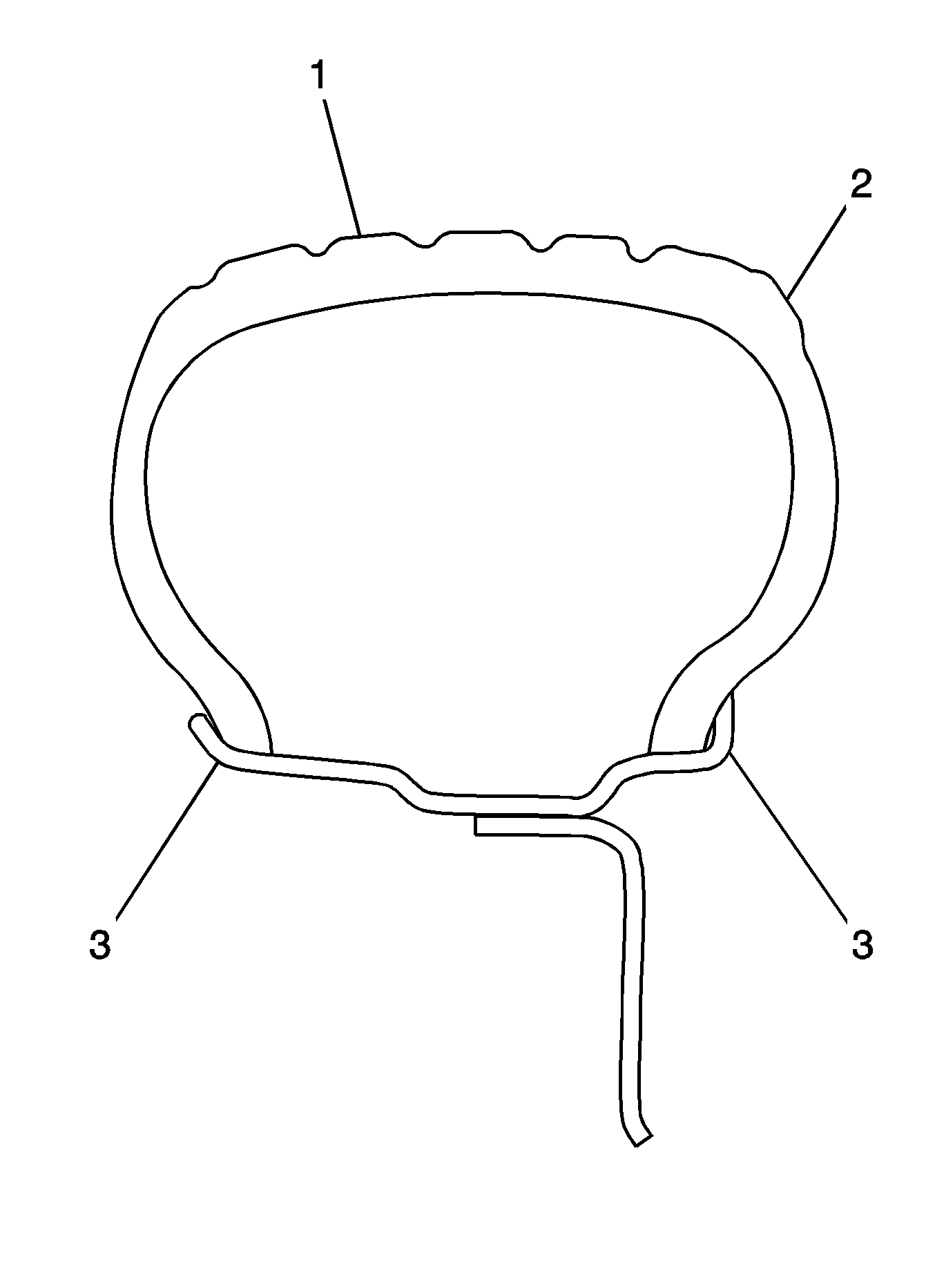| Table 1: | Abnormal or Excessive Tire Wear |
| Table 2: | Scuffed Tires |
| Table 3: | Wheel Tramp |
| Table 4: | Cupped Tires |

Irregular and premature tire wear has many causes. Some of them are incorrect inflation pressures (1), lack or regular rotation (2), poor driving habits, or improper wheel alignment (3). If the wheel alignment is reset because of tire wear, always reset the toe as close to zero degrees as the specification allows. Refer to Front Toe Adjustment .
Rotate the tires if:
| • | The front tire wear is different from the rear. |
| • | The left and right front tire wear is unequal. |
| • | The left and right rear tire wear is unequal. |
Check the wheel alignment if:
| • | The left and right front tire wear is unequal. |
| • | The wear is uneven across the tread of either front tire. |
| • | The front tire treads are scuffed with feather edges on the side of the tread ribs or blocks. |
Tread Wear Indicators

The original equipment tires have built-in tread wear indicators to show when the tires need replacement. These indicators appear as bands when the tire tread depth becomes shallow (1, 2). Tire replacement is recommended when the indicators appear in 3 or more grooves at 6 locations.
Wheel Runout

Measure wheel runout with an accurate dial indicator. Measurements may be taken with the wheels either on or off the vehicle, using an accurate mounting surface such as a wheel balancer. Measurements may be taken with or without the tire mounted on the wheel.
Measure radial runout and lateral runout (3) on both the inboard and the outboard rim flanges. With the dial indicator firmly seated next to the wheel and tire assembly, slowly rotate the wheel one revolution and record the indicator reading. If any measurement exceeds the following specifications and there is a vibration that wheel balancing will not correct, replace the wheel. Disregard any indicator readings due to welds, paint runs, or scratches.
Steel Wheels
| • | Radial runout: 0.8 mm (0.03 in) |
| • | Lateral runout: 1 mm (0.04 in) |
Aluminum Wheels
| • | Radial runout: 0.8 mm (0.03 in) |
| • | Lateral runout: 0.8 mm (0.03 in) |
Measure free radial runout (1) on the center of the tire tread. The tread can be taped to present a smooth surface. Measure free lateral runout (2) on the outboard side of the tire nearest to the tread.
Steel and Aluminum Wheels
Free radial runout: 1.5 mm (0.06 in)
Checks | Actions |
|---|---|
Check the front-wheel and rear-wheel alignment. | Align the front and the rear wheels. |
Inspect for excessive toe. | Adjust the toe. |
Inspect for a broken or a sagging spring. | Replace the spring. |
Inspect for out-of-balance tires. | Balance the tires. |
Inspect for worn strut dampeners. | Replace the strut dampeners. |
Check for a failure to rotate tires. | Rotate the tires. Replace the tires as needed. |
Check for an overloaded vehicle. | Maintain the proper load weight. |
Inspect for low tire inflation. | Inflate the tires to the proper pressure. |
Checks | Actions |
|---|---|
Inspect for incorrect toe. | Adjust the toe. |
Inspect for a twisted or a bent suspension arm. | Replace the suspension arm. |
Checks | Actions |
|---|---|
Inspect for an out-of-balance tire or wheel. | Balance the tire or the wheel. |
Inspect for improper strut dampener action. | Replace the strut dampeners. |
Checks | Actions |
|---|---|
Check the front-wheel and the rear-wheel alignment | Align the front and the rear wheels. |
Inspect for worn strut dampeners. | Replace the strut dampeners. |
Inspect for worn or loose wheel bearings. | Tighten the drive axle nut. Replace the wheel bearings as needed. |
Inspect for excessive tire or wheel runout. | Match-mount the tires. Replace the tires as needed. |
Inspect for a worn ball joint. | Replace the ball joint. Replace the wheels as needed. |
Check the steering gear preload adjustment. | Perform a rack bearing preload on-vehicle adjustment. |
